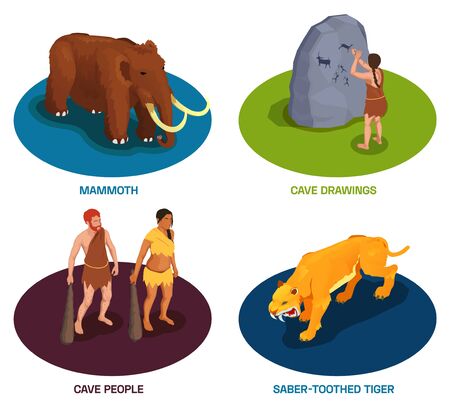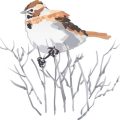Introduction to the National Trust
Amid the gentle rise and fall of British hills, where ancient woodlands meet windswept moors, the National Trust stands as a steadfast guardian of our green and pleasant land. Founded in 1895 by visionaries Octavia Hill, Sir Robert Hunter, and Hardwicke Rawnsley, this cherished institution has become woven into the fabric of UK life. With a legacy stretching over a century, the National Trust is now one of the largest conservation charities in Europe, caring for more than 250,000 hectares of countryside, over 780 miles of coastline, and hundreds of historic houses and gardens. Yet its mission goes far beyond preserving stately homes; at its heart lies a deep commitment to protecting the wild spaces that nurture Britain’s rarest species. Through a patchwork of protected landscapes—each humming with birdsong or dappled with wildflowers—the National Trust safeguards not just scenic beauty but also vital habitats for wildlife under threat. Every footstep taken on its trails is an act of quiet stewardship, supporting a vision where people and nature thrive together amidst the ever-changing seasons.
Exploring the Diversity of National Trust Walks
The tapestry of National Trust walks across the United Kingdom is as rich and varied as the land itself. From the windswept moors of Yorkshire to the ancient woodlands of Devon, each walking trail offers a unique immersion into the country’s natural heritage. These paths are more than just routes through picturesque landscapes; they are living corridors that link people intimately with the native flora and fauna of Britain. As you step onto a Trust-maintained trail, you become part of a quiet tradition—one that balances human curiosity with reverence for nature’s fragile beauty.
Connecting with Nature Through Unique Landscapes
Every region under the care of the National Trust reveals its own ecological story. Along coastal trails in Cornwall, you might catch sight of grey seals basking on rocky outcrops or hear the high-pitched calls of rare Cornish choughs overhead. In contrast, a gentle stroll through the Lake District brings encounters with resilient mountain plants clinging to crags and red squirrels darting among ancient oaks. The diversity of these landscapes is not only visually captivating but also essential in sustaining endangered species whose habitats have shrunk elsewhere.
Regional Highlights of National Trust Walks
| Region | Unique Landscape Features | Notable Endangered Species |
|---|---|---|
| South West England | Dramatic coastlines, wildflower meadows | Cornish chough, greater horseshoe bat |
| Lake District | Glacial lakes, ancient woodlands | Red squirrel, vendace fish |
| Yorkshire Moors | Heather-clad moorland, peat bogs | Curlew, black grouse |
| Wales | Celtic rainforest, upland valleys | Pine marten, lesser horseshoe bat |
| Northern Ireland | Limestone grasslands, rugged cliffs | Irish hare, marsh fritillary butterfly |
The Walkers Bond with Wildlife and Wild Places
Walking these diverse trails is a sensorial journey—where your footsteps stir up earthy scents after rain and your eyes feast on a palette of greens and golds. With every mile walked, there’s a growing awareness: these are not just places for recreation but sanctuaries where threatened species find refuge. By drawing walkers into close contact with these environments, National Trust walks foster empathy and stewardship, creating personal connections that inspire ongoing protection for Britain’s most vulnerable wildlife.

3. Threatened Species and Their Habitats
Wandering through the ancient woodlands and windswept coastlines under the care of the National Trust, one is gently reminded of the delicate balance that sustains life in the British countryside. Here, amongst moss-laden trees and heather-clad hills, reside some of the UK’s most threatened species—each clinging to existence within fragments of their once-vast domains.
Highlighting Endangered UK Species
The soft flutter of a hazel dormouse in the branches, or the shy dart of a red squirrel through Scots pine needles, are moments now rare enough to be treasured. These creatures, along with others like the natterjack toad calling from sandy dunes or the curlew’s haunting song across saltmarshes, have become symbols of nature’s fragility. Many walkers may also catch glimpses of lesser horseshoe bats at dusk, or find evidence of water voles along quiet streambanks—each an indicator species reflecting the health of their chosen habitats.
Complex Ecosystems Under Pressure
The survival of these species is intimately tied to the preservation of their homes. Caledonian pine forests, wildflower meadows, chalk grasslands and coastal heath each offer a unique tapestry of shelter and sustenance. Yet, these ecosystems are increasingly fragmented by roads, housing developments, and intensive agriculture. Hedgerows that once wove through fields as vital wildlife corridors now stand broken or lost; wetlands have been drained; ancient woodlands felled for timber or replaced with monocultures.
Modern Challenges and Uncertain Futures
Beyond habitat loss, modern Britain poses additional challenges: pollution seeps into rivers and soils, while invasive species outcompete native flora and fauna. Climate change brings unpredictable weather patterns—droughts that parch amphibian breeding ponds, or storms that flatten nesting grounds. Each threat chips away at populations already vulnerable from centuries of decline. In this context, National Trust walks do more than provide scenic pleasure; they offer visitors a living storybook where every path crossed is a step through history and hope—a chance to witness what remains, and to reflect on what still can be saved.
4. How Walks Support Conservation Efforts
Amidst the gentle hush of ancient woodland or the bracing sweep of coastal air, National Trust walks are far more than tranquil escapes; they become living classrooms and catalysts for conservation action. Guided and independent walks play distinct yet complementary roles in protecting endangered species across the UK, each weaving together awareness, community spirit, and vital funding.
Raising Public Awareness
The power of a walk lies in its ability to make the invisible visible. Guided walks, led by passionate rangers or local experts, offer captivating stories about rare butterflies flitting through chalk grasslands or elusive water voles hiding along riverbanks. These encounters awaken curiosity and empathy, gently teaching walkers about fragile habitats and the daily challenges faced by wildlife at risk. Even self-guided trails are thoughtfully designed with signposts and interpretation boards, ensuring visitors can connect with nature’s quiet wonders at their own pace.
Engaging Communities
National Trust walks often bring together people who might not otherwise meet—families, school groups, seasoned ramblers, and newcomers alike. Through volunteering events, citizen science projects, or themed walks focusing on particular species (such as red squirrels or nightjars), communities become personally invested in local conservation stories. This shared experience fosters a sense of stewardship—a feeling that these ancient woods, wildflower meadows, and windswept cliffs belong to all of us, and we all have a part to play in their protection.
Generating Funding for Protection Projects
Beneath the simple pleasure of a countryside stroll lies a steady stream of support for conservation efforts. Walkers contribute through entry fees, donations at visitor centres, or by taking part in sponsored charity walks. Funds raised are channelled directly into safeguarding precious habitats, restoring hedgerows, or supporting breeding programmes for threatened species.
Key Impacts of National Trust Walks
| Aspect | Guided Walks | Independent Walks |
|---|---|---|
| Awareness Raised | Expert-led storytelling deepens understanding of local wildlife. | Interpretive signs highlight key species and habitats along routes. |
| Community Engagement | Group events build networks among local residents and volunteers. | Accessible routes invite frequent visits and ongoing interest. |
| Funding Generated | Ticket sales & event fees support conservation projects. | Donations from walkers and shop purchases fund habitat restoration. |
The Ripple Effect: Every Step Counts
Every footfall along these storied paths sends ripples through the wider landscape. By blending education with enjoyment and tying each visit to meaningful action, National Trust walks ensure that the beauty and diversity of Britain’s natural heritage can endure—cherished now, safeguarded for generations yet to come.
5. Community Involvement and Citizen Science
One of the most heartening aspects of National Trust walks is the way they weave together the threads of community, nature, and stewardship. Across the rolling hills of the Lake District, along the windswept cliffs of Cornwall, and through ancient woodlands in Kent, local communities and visitors alike become active participants in a living story—one where every pair of eyes and hands makes a difference to the fate of endangered UK species.
Through a rich tapestry of citizen science initiatives, walkers are invited to do more than simply admire the landscape. Equipped with field guides or smartphone apps, families and ramblers record sightings of rare butterflies like the High Brown Fritillary or elusive mammals such as water voles. These observations feed directly into national databases, providing conservationists with invaluable data that helps shape protective measures for vulnerable habitats.
Community-led projects often spring from these walks. Local volunteers gather at dawn to check nest boxes for barn owls or to survey wildflower meadows for pollinator activity. School groups are welcomed onto trails for “bug hunts” or amphibian counts, learning not only about the wonders of British wildlife but also about their own capacity to effect change. Even casual visitors are gently encouraged to report signs of invasive species or illegal activities that threaten native flora and fauna.
This hands-on participation creates a sense of shared guardianship—a recognition that these landscapes belong to everyone, and their well-being depends on collective effort. The simple act of noticing a rare bird call or marking an otter track becomes part of a much larger conversation about what it means to care for our natural heritage.
The National Trust’s approach is deeply rooted in British values: collaboration over competition, quiet observation over intrusion, respect for tradition balanced by openness to new ideas. Through regular training days and seasonal events, communities build skills in habitat management and species identification, fostering pride in both place and purpose. In this way, National Trust walks serve not just as scenic routes but as classrooms without walls—places where everyday people become nature’s most dedicated allies.
6. Stories from the Path: Successes and Hopes
There is something quietly magical about setting foot on a National Trust trail at dawn, dew clinging to boots and the calls of skylarks rising above rolling meadows. Along these winding paths, walkers are not only guests in nature’s home—they become its stewards, witnesses to stories of hope and survival that unfold beneath ancient oaks and among the heather. Each step carries a promise: to protect, to learn, and to cherish the wild heart of Britain.
In Dorset’s Purbeck Hills, for instance, years of careful habitat restoration have coaxed the rare ladybird spider back from the brink. Volunteers recall with pride how once-barren patches now shimmer with gossamer webs, while walkers pause in hushed awe at signposts describing this remarkable comeback. In the Lake District, red squirrels—those tufted-eared treasures—dart playfully across mossy walls, their population steadying thanks to ongoing conservation efforts supported by mindful visitors who respect marked trails and feeding guidelines.
Personal encounters leave lasting impressions—a glimpse of a dartford warbler flitting through gorse on a Sussex heath or the gentle rustle of a hedgehog foraging at dusk near a Cotswold path. These moments remind us that our presence matters; every walker who closes a gate or carries away litter becomes part of a living legacy. The connection forged between humans and wildlife is woven from countless small acts of care and curiosity, each one reinforcing our shared place in the landscape.
The bond between walkers, wildlife, and the land is irreplaceable—rooted in centuries of British tradition yet evolving with each new conservation story. As families explore bluebell woods or ramblers cross windswept moors, they carry forward tales of recovery: otters returning to rivers once thought lost, butterflies brightening chalk grasslands where they had vanished for decades. These successes are not just victories for nature but for all who call these islands home.
Yet hope does not rest solely on past achievements. Every walk offers fresh opportunity—to spot signs of elusive creatures, to share sightings with fellow nature lovers, or simply to reflect on the responsibility we bear as guardians of these precious places. The National Trust’s work ensures that future generations will have their own stories to tell: of barn owls hunting at twilight, orchids blooming in secret glades, and communities uniting in support of species great and small.
These paths are more than routes through countryside; they are threads stitching together people and planet, past and present, loss and renewal. With every footfall comes a quiet vow: that endangered species will find sanctuary here, watched over by those who walk with wonder—and with hope.
7. Looking Ahead: The Future of Wildlife Protection
As we look towards the horizon, the landscape of wildlife protection in the UK is ever-changing, shaped by both ancient traditions and modern innovation. While National Trust walks have become a cherished part of British life—inviting families, friends, and solitary ramblers alike to lose themselves among wildflower meadows or windswept moors—the challenges faced by our endangered species remain complex and persistent.
Ongoing Challenges in Conservation
Habitat loss, climate change, and invasive species continue to threaten the delicate balance of our ecosystems. Even in the most picturesque corners of the countryside, from Cornish headlands to the rolling Cotswolds, precious habitats require constant vigilance. The interconnectedness between human activity and wildlife health means that every visitor’s footprint matters. Yet, with increased awareness comes increased responsibility—a challenge embraced daily by the National Trust and its dedicated volunteers.
Innovation in Conservation Strategies
It is not enough to simply preserve; we must adapt. Across National Trust sites, new conservation strategies are taking root: rewilding projects breathe fresh hope into depleted landscapes, while citizen science initiatives empower walkers to become guardians of nature. Drones monitor elusive species overhead, and community-led habitat restoration brings together locals for common purpose under British skies. These innovative approaches are carving out pathways for endangered wildlife to recover and thrive.
The Enduring Role of Walkers and the National Trust
The true magic of National Trust walks lies in their power to connect us—humans and wildlife alike—with the land’s timeless stories. Every footstep along an ancient woodland path or coastal trail echoes with quiet promise: that we will continue to care for these living treasures. The enduring role of visitors is not passive; each person becomes a participant in safeguarding rare orchids or nesting birds simply by treading thoughtfully and supporting ongoing conservation work. Together, through continued engagement and fresh thinking, we can ensure that future generations inherit a landscape alive with songbirds at dawn, butterflies on the breeze, and hope blooming beneath every hedgerow.


